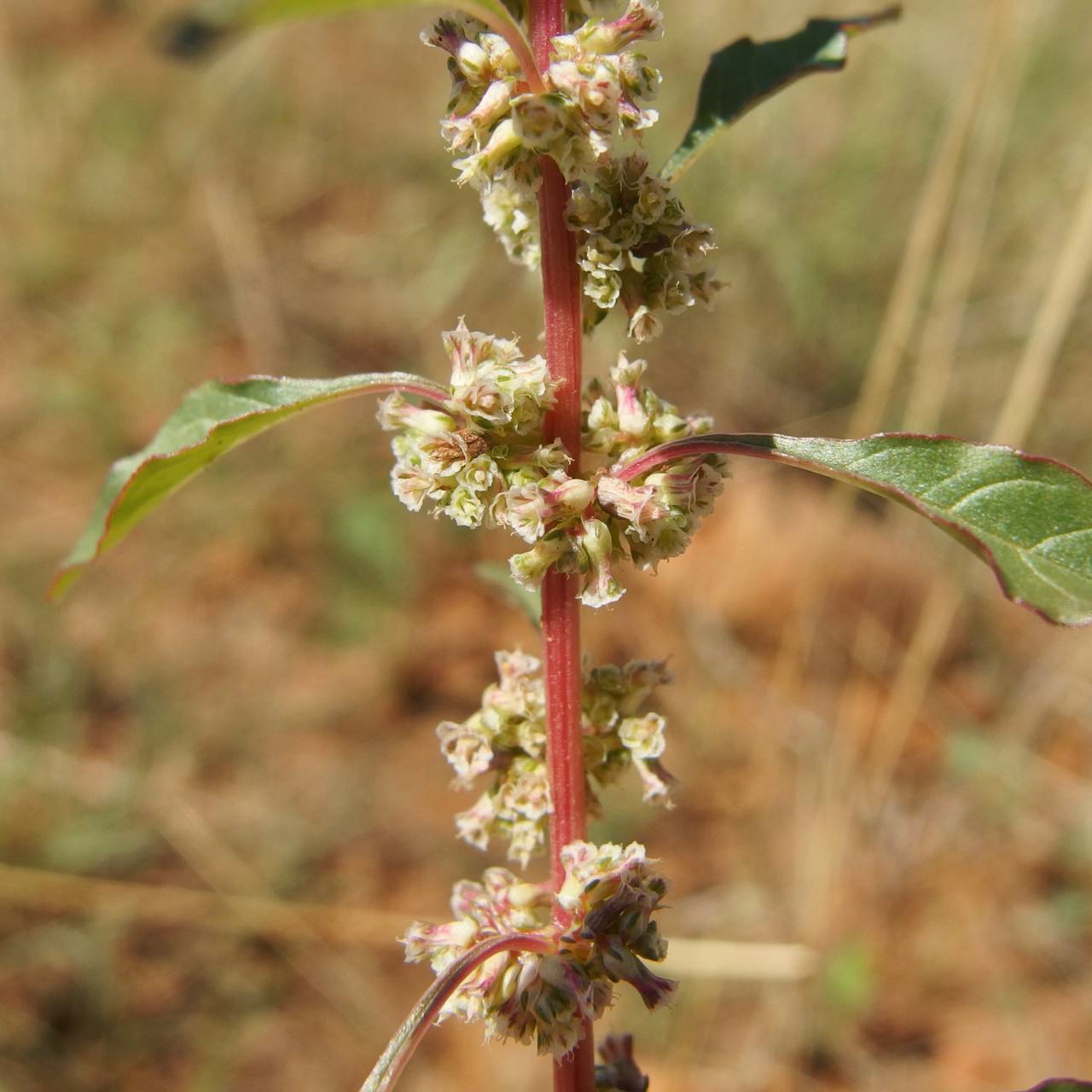
|
Family: Amaranthaceae |
Herbs, usually annual, rarely perennial, monoecious (subg. Amaranthus and Albersia) or dioecious (subg. Acnida), glabrous or pubescent. Stems erect, ascending, decumbent, or prostrate, usually branched, occasionally simple or nearly so; without nodal spines (except in A. spinosus ). Leaves alternate, petiolate; blade rhombic-ovate, ovate, obovate, spatulate, lanceolate, oblanceolate, or orbiculate to linear, base rounded to narrowly cuneate, margins usually entire, usually plane, slightly undulate, or crispate, rarely undulate-erose, apex acute, obtuse, or emarginate, usually mucronulate. Inflorescences terminal and/or axillary or exclusively terminal, compound dichasia arranged in spikes, thyrses, panicles, or glomerules; components of terminal inflorescences often subtended by reduced leaves (pseudobracts), each dichasium unit subtended by persistent bracts. Bracts ovate, lanceolate, linear, subulate, deltate, or broadly triangular (in A. acanthochiton), or proximal bracts modified into spines (in A. spinosus); bracts of pistillate flowers not keeled (keeled in A. scleropoides and A. crassipes); bracteoles absent or 1-2. Flowers unisexual. Pistillate flowers: tepals absent or (1-)3-5, distinct (connate in proximal 1/3 in A. polygonoides, equal or outer tepals larger than inner ones, usually membranaceous, sometimes scarious at maturity; stamens absent [rudimentary]; pistil 1; ovule 1; style 0.1-1 mm, or absent; stigmas 2-3(-5), slender. Staminate flowers: tepals 3-5, equal or subequal; stamens 3-5, filaments distinct, anthers 4-locular, pseudostaminodes absent; pistils absent or rudimentary. Utricles loosely enclosed by inner tepals, occasionally conspicuously 3(-5)-veined, usually globose, ovoid, or elongate-ovoid, thin walled, membranaceous, rugose or tuberculate, glabrous, dehiscence regularly circumscissile, irregularly dehiscent, or indehiscent. Seeds 1, subglobose or lenticular, usually smooth, shiny, sometimes indistinctly puncticulate or reticulate; embryo annular. x = 16, 17. Some segregate genera of Amaranthus, in the broad sense, have been proposed and sometimes recognized (see synonymy). In the present treatment, Amaranthus is accepted in its broad sense. Three subgenera are currently recognized (S. L. Mosyakin and K. R. Robertson 1996): subg. Acnida, subg. Amaranthus, and subg. Albersia. Monoecious or dioecious; fls small, each subtended by bracts and bracteoles; cal of 1-5 scarious or membranous sep separate to the base, often aristate, or wanting from the pistillate fls; stamens 1-5, with short filament and linear-oblong anther; ovary short and broad, compressed; style short or virtually none; stigmas (2)3(5), slender, pubescent; ovule l; fr a thin-walled to coriaceous utricle, indehiscent or bursting irregularly, or commonly circumscissile at the middle, crowned by the persistent stigmas; seed flattened or lenticular, round to obovate; prostrate to erect annuals, usually much branched, with alternate, petiolate, entire or sinuate lvs; fls in small axillary clusters, or aggregated into axillary or terminal, simple or panicled spike-like thyrses. 50, widespread. (Acnida) Spp. 8-13 are ±connected by intermediates of hybrid origin. Gleason, Henry A. & Cronquist, Arthur J. 1991. Manual of vascular plants of northeastern United States and adjacent Canada. lxxv + 910 pp. ©The New York Botanical Garden. All rights reserved. Used by permission. |
This project was made possible in part by the Institute of Museum and Library Services [MG-70-19-0057-19].
Powered by Symbiota



